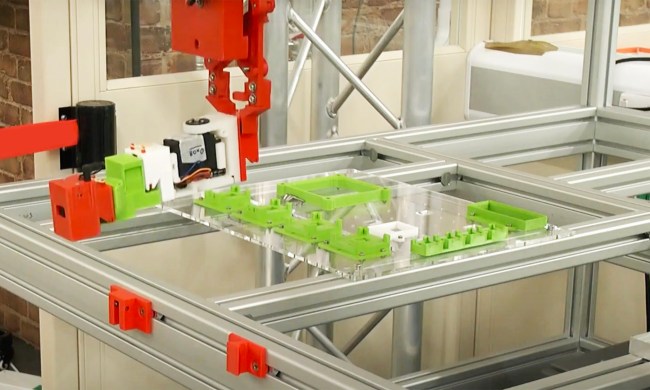While similar algorithms have been created before, previous solutions often confused the robots by making them so focused on not running into each other that they stopped moving altogether.
The new solution shrinks the size of a “bubble” which exists around each robot — allowing it to sense its surroundings — so that the bubble is as small as possible. “It means making the minimal amount of changes to a robot’s behavior so as to let it still accomplish its primary task,” Magnus Egerstedt, director of Georgia Tech’s Institute of Robotics and Intelligent Machines, told Digital Trends.
In a demo of the new algorithms, researchers from the lab started with four robots, and eventually moved up to twenty in total, to explore their ability to move independently — while still avoiding smacking into each other.
“What interested me is that we saw a kind of traffic rule emerge,” Egerstedt said. “In the demo, the robots started circling each other in a clockwise manner. That’s not something we programmed, it’s just the evasive action they came up with to avoid crashing into one another. I thought it was really, really fascinating.”
Projects like this are interesting in terms of the computer science associated with emergent behavior, but Egerstedt said that it also has a real-world use-case.
“One of the immediate applications I’m excited about is intelligent transportation,” he said. “If we could have self-driving vehicles that are smarter in terms of how they move in relation to each other we could create a significantly better flow of traffic on the streets. We’re beginning to connect together devices on a scale that we’ve never seen before. All of a sudden we’re going to see more and more smart devices talking to each other. This has real potential in terms of making our lives better, but at the same time we need to make sure that these things are safe.”


